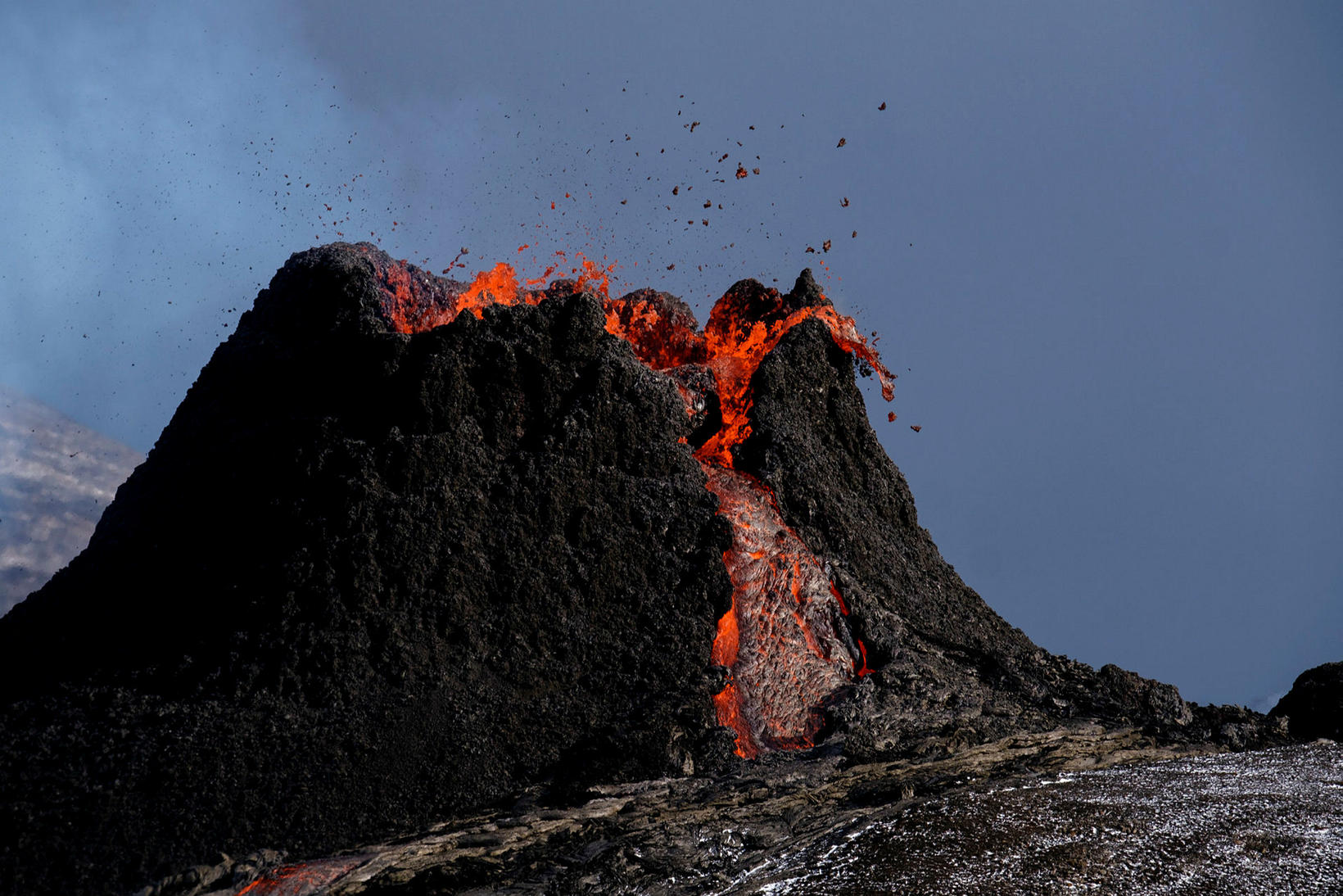Dangerous Volcanic Gas Pollution This Afternoon
Southwesterly winds have died down on the Reykjanes peninsula today, and the Icelandic Met Office has posted a message on its website, stating that pollution from volcanic gases will increase substantially today with calmer winds.
Gas pollution levels at the site of the eruption are expected to far exceed health protection limits after 7 pm. The amount of SO2 near the eruption site could exceed 9000 µg/m3, and one can assume that CO2 will accumulate in hollows.
Anyone who visits the area today is advised to leave the site by 5 pm, to watch the eruption from nearby mountains only, and to avoid walking down to valleys or hollows.
Halldór Björnsson, group leader of weather and climate research, tells Morgunblaðið that once the wind dies down, danger can be looming. “That’s when gases start accumulating in hollows,” he states. “When that happens, dangerous conditions can develop, since some of the gases have no smell.” Such conditions could develop this afternoon.
Volcanologist Ármann Höskuldsson explains: “First, carbon dioxide and carbon monoxide have neither smell nor color,” he states. “But they make you lose consciousness. You can’t control it. When too much of these accumulate, your body makes you lose consciousness in an attempt to save you. You just drop down as if you had suffered a heart attack.”
“The number one rule is to always have the wind at your back,” he advises. “If the wind direction changes, you must change your position, even though that may mean a worse view.”
Finally, there is sulfur dioxide, he adds. “When it gets into your eyes, and when you breathe it into your lungs, it reacts with water to form sulfuric acid...which can have a long-term effect on your eyesight and on your lungs’ oxygen uptake ability.”
The sulfur dioxide, though, is visible – a blue kind of smoke – and it has a smell, making it easier to avoid than the carbon dioxide and carbon monoxide.
The main thing is to be cautious – follow the advice of the Met Office by keeping a safe distance from the eruption and avoid valleys and hollows near the eruption site.
If, in the coming days, you decide to visit the eruption site, read this essential advice from the Department of Civil Protection and Emergency Management first.




/frimg/1/57/87/1578747.jpg)



